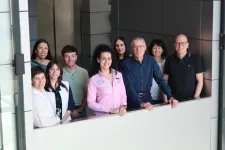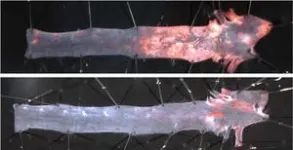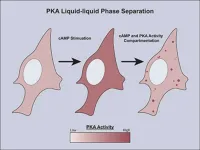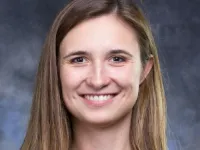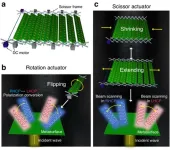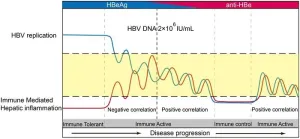(Press-News.org)
Hutchinson-Gilford progeria syndrome (HGPS) is an extremely rare genetic disease that affects just 1 in every 20 million people; it is estimated that fewer than 400 children in the world have the disease. HGPS is characterized by accelerated aging, severe atherosclerosis, and premature death at an average age of about 15 years. Although people with HGPS do not normally have conventional cardiovascular risk factors (hypercholesterolemia, obesity, smoking, etc.), most patients die from the complications of atherosclerosis: myocardial infarction, stroke, or heart failure. HGPS currently has no cure, and there is thus an urgent need for new treatments to prevent the atherosclerosis and other vascular alterations associated with the disease and to increase life expectancy.
HGPS is caused by a mutation in the LMNA gene that leads to the expression of progerin, a mutated version of the nuclear protein lamin A that induces numerous defects in cells and body systems.
Recent studies in animal models of HGPS have demonstrated that the mutation can be corrected using gene-editing technology, and that the resulting elimination of progerin and restoration of lamin A expression reduces the symptoms of HGPS and increases life expectancy.
The optimization of gene therapy for possible treatment of HGPS patients will require the identification of the cell types in which elimination of progerin produces the most benefit.
To address this challenge, the laboratory headed by Dr. Vicente Andrés at the Centro Nacional de Investigaciones Cardiovasculares Carlos III (CNIC) in Madrid previously generated the HGPSrev mouse model. The results of this earlier study, published in the journal Circulation, suggested that vascular smooth muscle cells could be a therapeutic target for combating premature atherosclerosis in progeria.
“HGPSrev mice express progerin and lack lamin A in all cells of the body while permitting the elimination of progerin and the restoration of lamin A in specific cell types and at specific disease stages,” explained Dr. Andrés, whose research group also forms part of the Spanish cardiovascular research network (CIBERCV).
Now, Ignacio Benedicto at the Centro de Investigaciones Biológicas Margarita Salas-CSIC, working with Dr. Andrés’s team and colleagues at the university of Oviedo and Queen Mary University of London, have examined whether atherosclerosis can be avoided in HGPSrev mice by suppressing progerin and restoring lamin A either in endothelial cells or in vascular smooth muscle cells, “two types of cells in the arterial wall that play a central role in the development of atherosclerosis in the general population,” explained Dr. Benedicto. The results of the new study are published in The Proceedings of the National Academy of Sciences.
The researchers discovered that the elimination of progerin from the endothelial cells of HGPSrev mice produced no benefit. These mice developed atherosclerosis, arterial fibrosis, and vascular inflammation and lost weight and died prematurely just the same as mice expressing progerin in all cells of the body. In contrast, HGPSrev mice in which progerin was deleted and lamin A restored in vascular smooth muscle cells did not develop atherosclerosis or other vascular defects and were indistinguishable from control mice with no progerin expression in any tissue.
“These results suggest that correcting the culprit HGPS mutation in vascular smooth muscle cells could be enough to produce a significant therapeutic benefit,” said Dr. Benedicto.
Dr. Andrés added that “a strategy of this kind would probably require lower doses of gene-editing reagents than needed to eliminate progerin in all tissues, thus increasing the chances of designing effective and safe clinical applications in the future.”
Dr. Andrés also emphasized the importance of investigating rare diseases that affect only a very small number of people. “Considered together, the approximately 7000 rare diseases known to exist constitute a major health and societal problem that affects 7% of the world population, including 3 million patients in Spain alone. One of the biggest difficulties these patients face is the lack of effective diagnosis and treatment, in large part a consequence of these diseases not receiving sufficient research attention. In the case of progeria, currently there is no cure, and the available palliative therapies are of limited benefit. It is therefore important to continue research in order to gain knowledge about the mechanisms through which progerin accelerates aging in HGPS, develop new treatments, and, eventually, cure this disease.”
About the CNIC
The CNIC is an affiliate center of the Carlos III Health Institute (ISCIII), an executive agency of the Spanish Ministry of Science, Innovation, and Universities. Directed by Dr. Valentín Fuster, the CNIC is dedicated to cardiovascular research and the translation of the knowledge gained into real benefits for patients. The CNIC has been recognized by the Spanish government as a Severo Ochoa center of excellence (award CEX2020-001041-S, funded by MICIN/AEI/10.13039/501100011033). The center is financed through a pioneering public-private partnership between the government (through the ISCIII) and the Pro-CNIC Foundation, which brings together 12 of the most important Spanish private companies.
END
Dilated cardiomyopathy is the most frequent cause of heart failure in young people and is the leading cause of heart transplantation. In this disease, the heart enlarges and reduces its capacity to pump blood. People with dilated cardiomyopathy are at high risk for arrhythmias and sudden death.
In approximately 30%–40% of people with dilated cardiomyopathy, the disease is caused by a genetic mutation. When a genetic cause is identified, the patient’s family members can be studied to determine if they have also inherited the altered gene.
Family members who are carriers of the genetic mutation are at risk for developing the disease in ...
As the World Health Organization (WHO) pushes for countries to seal the Pandemic Treaty by May this year, researchers at the University of Warwick and Kings College London stress the need for fair negotiations.
The opinion piece, featured in PLOS Global Public Health journal, is led by Professor Sharifah Sekalala . The team highlights the importance of considering "Time Equity" in these talks, urging caution on setting deadlines and sharing the burden when time is tight.
Since COVID-19 hit, demands for health equity ...
The International Society for Autism Research (INSAR) will hold its 2024 Annual Meeting – the organization’s 23rd – from Wednesday, May 15 through Saturday, May 18, 2024, bringing together a global, multidisciplinary group of more than 1,200 autism researchers, clinicians, advocates, self-advocates, and students from 20 countries to exchange the latest scientific learnings and discoveries that are advancing the expanding understanding of autism and its complexities. This year’s ...
Healthy cells respond appropriately to changes in their environment. They do this by sensing what’s happening outside and relaying a command to the precise biomolecule in the precise domain that can carry out the necessary response. When the message gets to the right domain at the right time, your body stays healthy. When it ends up at the wrong place at the wrong time, you can get diseases such as diabetes or cancer.
The routes that messages take inside a cell are called signaling pathways. Cells use only a few signaling pathways to respond simultaneously to hundreds of external signals, so those pathways need to be tightly ...
COS Mason Researchers Translating Research Into Practice To Create Climate-Ready Communities Across Virginia
Four Mason researchers received funding for: “ART: Translating Research into Practice to Create Climate-Ready Communities Across Virginia.”
Leah Nichols, Executive Director, Institute for a Sustainable Earth, Research and Innovation Initiatives; James Kinter, Professor, Climate Dynamics, Atmospheric, Oceanic and Earth Sciences (AOES); Director, Center for Ocean-Land-Atmosphere Studies (COLA); Luis Ortiz, Assistant Professor, AOES; and Celso Ferreira, Associate Professor, Sid and Reva Dewberry Department of Civil, Environmental, and Infrastructure Engineering, are ...
Hao Receives Funding for NOAA AMSU-A CDR Products Support ...
“Where is my life going?” “Who do I want to be?”
As future-thinkers, adolescents spend significant time contemplating these types of questions about their life goals. A new study from the University of Houston shows that as people grow from teenagers to young adults, they tend to change the importance they place on certain life goals, but one thing is certain: The existence of high prestige and education goals, as well as their positive development, can drive success.
“Adolescents who endorsed higher levels of prestige and education goals tended to have higher educational attainment, income, ...
Researchers have unveiled a technology that propels the field of wireless communication forward. This cutting-edge design, termed a reconfigurable transmissive metasurface, utilizes a synergistic blend of scissor and rotation actuators to independently manage beam scanning and polarization conversion. This introduces an innovative approach to boosting signal strength and efficiency within wireless networks.
Reconfigurable metasurfaces are transforming wireless communication by adjusting electromagnetic (EM) wave characteristics such as amplitude, phase, and polarization. These planar arrays enhance wave control, boosting functionalities ...
Background and Aims
Disease progression of chronic hepatitis B virus (HBV) infection is driven by the interactions between viral replication and the host immune response against the infection. This study aimed to clarify the relationship between HBV replication and hepatic inflammation during disease progression.
Methods
Two cross-sectional, one validation cohort, and meta-analyses were used to explore the relationship between HBV replication and liver inflammation. Spearman analysis, multiple linear regression, and logistic regression were used to explore the relationship between variables.
Results
In ...
Nathan Sleeter, Research Assistant Professor, History and Art History, Roy Rosenzweig Center for History and New Media (RRCHNM), is set to receive funding for: “American Indian Science and Engineering Society (AISES) at 50 website.”
RRCHNM researchers will develop a website that will tell the story of AISES’s first 50 years, its founding mission, its growth, and the individuals who have been part of its work supporting American Indians in STEM. Sleeter will serve as project director.
The researchers will also conduct and record oral history ...
